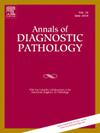病理学中的大语言模型:ChatGPT 和 Bard 与病理学学员在选择题上的比较研究。
IF 1.5
4区 医学
Q3 PATHOLOGY
引用次数: 0
摘要
大语言模型(LLM),如 ChatGPT 和 Bard,已在各种医疗应用中显示出潜力。本研究旨在评估大型语言模型(特别是 ChatGPT 和 Bard)在病理学中的表现,将其与病理学学员的表现进行比较,并评估其回答的一致性。我们从 15 个亚专科中选择了 150 道选择题,其中不包括有图像的题目。ChatGPT 和 Bard 在 2023 年 6 月至 2024 年 1 月期间分三次对这些问题进行了测试,并将他们的回答与来自两家医院的 16 名病理学学员(8 名初级学员和 8 名高级学员)的回答进行了比较。根据学员的表现,问题被分为简单、中等和困难三个等级。我们分析了三个评估环节中 LLM 回答的一致性和可变性。ChatGPT 的表现明显优于 Bard 和受训者,平均总分达到 82.2%,而 Bard 为 49.5%,初级受训者为 45.1%,高级受训者为 56.0%。与巴德(31.7%-34.1%)和受训者(4.9%-48.8%)相比,ChatGPT 在难题(63.4%-68.3%)上的表现更为突出。在容易的问题上,ChatGPT(83.1%-91.5%)和受训人员(73.7%-100.0%)也表现出相似的高分。一致性分析表明,ChatGPT 在三次测试中表现出 80%-85% 的高一致性,而 Bard 则表现出 54%-61% 的差异性。虽然 LLM 在病理学教育和实践中大有可为,但持续开发和人工监督对于可靠的临床应用至关重要。本文章由计算机程序翻译,如有差异,请以英文原文为准。
Large language models in pathology: A comparative study of ChatGPT and Bard with pathology trainees on multiple-choice questions
Large language models (LLMs), such as ChatGPT and Bard, have shown potential in various medical applications. This study aimed to evaluate the performance of LLMs, specifically ChatGPT and Bard, in pathology by comparing their performance with those of pathology trainees, and to assess the consistency of their responses. We selected 150 multiple-choice questions from 15 subspecialties, excluding those with images. Both ChatGPT and Bard were tested on these questions across three separate sessions between June 2023 and January 2024, and their responses were compared with those of 16 pathology trainees (8 junior and 8 senior) from two hospitals. Questions were categorized into easy, intermediate, and difficult based on trainee performance. Consistency and variability in LLM responses were analyzed across three evaluation sessions. ChatGPT significantly outperformed Bard and trainees, achieving an average total score of 82.2% compared to Bard's 49.5%, junior trainees' 45.1%, and senior trainees' 56.0%. ChatGPT's performance was notably stronger in difficult questions (63.4%–68.3%) compared to Bard (31.7%–34.1%) and trainees (4.9%–48.8%). For easy questions, ChatGPT (83.1%–91.5%) and trainees (73.7%–100.0%) showed similar high scores. Consistency analysis revealed that ChatGPT showed a high consistency rate of 80%–85% across three tests, whereas Bard exhibited greater variability with consistency rates of 54%–61%. While LLMs show significant promise in pathology education and practice, continued development and human oversight are crucial for reliable clinical application.
求助全文
通过发布文献求助,成功后即可免费获取论文全文。
去求助
来源期刊
CiteScore
3.90
自引率
5.00%
发文量
149
审稿时长
26 days
期刊介绍:
A peer-reviewed journal devoted to the publication of articles dealing with traditional morphologic studies using standard diagnostic techniques and stressing clinicopathological correlations and scientific observation of relevance to the daily practice of pathology. Special features include pathologic-radiologic correlations and pathologic-cytologic correlations.

 求助内容:
求助内容: 应助结果提醒方式:
应助结果提醒方式:


